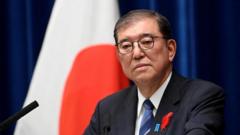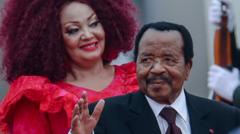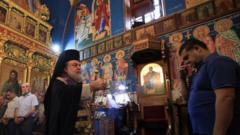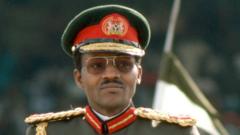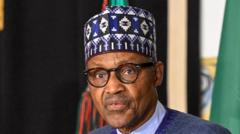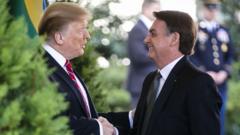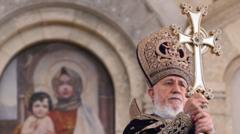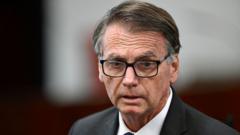As the Vatican gears up for the election of the Catholic Church's 267th pope, 133 cardinals will enter a secret conclave under the Sistine Chapel's iconic dome. The voting process begins after ceremonial masses and the establishment of a secure environment, where cardinals will face the task of reaching a consensus on the new pontiff while adhering to the ages-old traditions of secrecy and faith.
Cardinals Gather as Pope Election Conclave Approaches
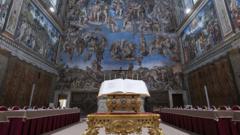
Cardinals Gather as Pope Election Conclave Approaches
Close to 133 cardinals prepare for the conclave to select the next leader of the Catholic Church amidst solemn rituals and secrecy.
Inside the Vatican's Sistine Chapel, a momentous occasion is set to unfold as 133 cardinals are prepared to participate in a conclave for the election of the Catholic Church's 267th pope. The solemn event commences on Wednesday evening with a mass at St. Peter's Basilica, presided over by Cardinal Dean Giovanni Battista Re, who has significant resonance as he celebrated Pope Francis' funeral.
The significance of secrecy looms large; beginning in the early afternoon, mobile signals in the Vatican will be disabled to ensure that cardinals remain insulated from the outside world during the critical selection process. At approximately 16:15 (15:15 BST), a litany and the hymn "Veni Creator," invoking the Holy Spirit's guidance, will accompany the cardinals' formal procession into the Sistine Chapel.
Upon their arrival, the cardinals will take a solemn oath promising confidentiality regarding the details of the papal election, a tradition steeped in the history of the church. As the gates to the Apostolic Palace close under lead seals, the isolation of the cardinals begins, marking the formal start of the conclave with the proclamation of "extra omnes" by Diego Ravelli, the Master of Pontifical Liturgical Celebrations.
With each cardinal receiving a ballot paper, the initial vote follows soon after. Though it remains uncommon for a pope to be elected in the first round, the significance of this initial vote should not be underestimated. Observers like Austen Ivereigh highlight that the first round reveals potential frontrunners, setting the stage for consensus-building among the electors.
Should the first vote fail to produce the requisite two-thirds majority for a papal selection, the cardinals will retreat to the Casa Santa Marta for dinner, where off-the-floor discussions among the electors can influence consensus. Italian reports suggest that light meals and wine await the cardinals, who are under an obligation of secrecy throughout the conclave.
As the new day dawns on Thursday, breakfast will be served between 06:30 and 07:30 for the cardinals, followed by more voting activities. Recent historical precedents suggest that the conclave may conclude within two days. Uncertainty remains about its length, as prolonged voting could signal deep divisions within the College of Cardinals.
As deliberations proceed in the pews, thousands of devotees outside will gaze up at the chimney located next to St. Peter's Basilica, eagerly anticipating the white smoke that will announce the church's new leader to the world. The road ahead is unpredictable, revealing both the challenges and hopes encapsulated within the conclave's sacred halls.

